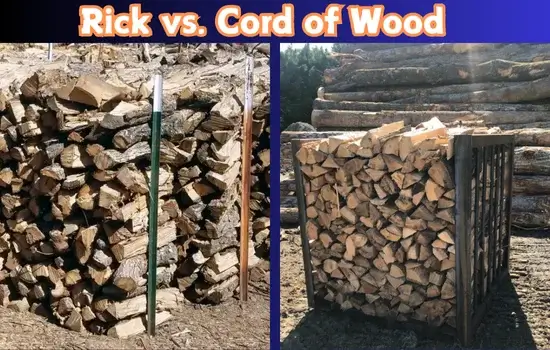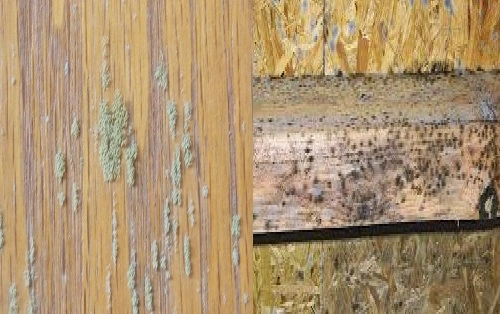Firewood remains an essential heating and recreational resource in many American homes, particularly during the colder months. Whether you’re stocking up for your wood stove, fireplace, or outdoor fire pit, understanding firewood measurements can help you get the best value for your money. The two most common terms you’ll encounter when buying firewood are rick and cord. While both measure firewood, they represent very different volumes and purposes.
This article will explain the differences between a rick and a cord of wood, their practical uses, and how to choose the right quantity for your needs.
What is a Cord of Wood?
A cord of wood is the standard, legally defined unit for measuring firewood in the United States. It’s a tightly stacked pile of wood that measures:
- 4 feet high × 4 feet wide × 8 feet long,
- Totaling 128 cubic feet of wood, including air gaps between the logs.
The key to a proper cord is how well the wood is stacked. The tighter the stack, the closer you’ll get to the full 128 cubic feet of wood.
Types of Cords:
- Full Cord: The standard 128 cubic feet.
- Face Cord: A single stack of firewood that measures 4 feet high and 8 feet long, but the log lengths are shorter (typically 16 inches). A face cord contains about 1/3 of a full cord.
Uses for a Cord of Wood:
- Heating a home for an extended period, such as through a winter season.
- Ideal for wood stoves, fireplaces, and furnaces that are a primary or supplemental heat source.
- Perfect for those with ample storage space to hold large quantities of wood.
What is a Rick of Wood?
A rick of wood is a less standardized measurement of firewood that varies depending on the seller and region. In most cases, a rick refers to:
- A 4-foot high × 8-foot long stack of firewood,
- With log lengths ranging between 12 inches and 24 inches.
The most common log length for a rick is 16 inches, which is one-third the depth of a full cord. Therefore, when logs are 16 inches long, a rick is equal to 1/3 of a cord (about 42.7 cubic feet).
However, since log lengths in a rick can vary, the actual volume of wood you receive may be different. Always confirm the log length and stack dimensions with your supplier to understand how much wood you’re purchasing.
Uses for a Rick of Wood:
- Ideal for short-term heating needs or mild winters.
- Suitable for recreational purposes, like fire pits, bonfires, or camping trips.
- A practical choice for homeowners with limited storage space.
Key Differences Between a Rick and a Cord of Wood

Here’s a clear breakdown of the differences between a rick and a cord of wood:
| Feature | Cord of Wood | Rick of Wood |
|---|---|---|
| Dimensions | 4 ft (H) × 4 ft (W) × 8 ft (L) = 128 cu ft | 4 ft (H) × 8 ft (L), log depth varies (16” ≈ 1/3 cord) |
| Standardization | Legally standardized measurement | Non-standard; dimensions can vary by seller or region |
| Volume | 128 cubic feet of wood (stacked tightly) | Approx. 42.7 cubic feet if logs are 16 inches |
| Log Length | Standard, typically 16 inches to 24 inches | Varies widely (commonly 12-24 inches) |
| Uses | Long-term heating, bulk firewood storage | Short-term heating, fire pits, and recreational use |
| Cost | More expensive, larger quantity of wood | Cheaper; smaller volume of wood |
Cost Comparison
The price of firewood varies depending on location, wood type (hardwood vs. softwood), and whether the wood is seasoned or green. Here’s how costs generally compare:
- Full Cord:
- A full cord of seasoned hardwood typically costs between $250 and $500, depending on the region.
- Hardwood like oak or maple costs more than softwoods like pine due to higher heat output.
- Rick of Wood:
- A rick of wood costs $80 to $150 when the logs are 16 inches long (approximately 1/3 of a cord).
While buying a full cord often provides better value per cubic foot, a rick is a good option if you need a smaller quantity.
Choosing Between a Rick and a Cord of Wood
When deciding whether to buy a rick or a cord of wood, consider the following factors:
- Heating Needs:
- Buy a Full Cord: If you rely on firewood as a primary heat source for your home during the winter, investing in a full cord ensures you have enough wood to last through the season.
- Buy a Rick: If you only use firewood occasionally, such as for a weekend fire in the fireplace or backyard fire pit, a rick provides ample wood without the excess.
- Storage Space:
- A full cord requires significant space (4 ft × 4 ft × 8 ft) for storage. If you have limited space, a rick is easier to manage and store.
- Budget:
- A rick of wood is more affordable upfront, making it a good choice for short-term needs or if you’re on a tight budget.
- Frequency of Use:
- If you burn wood regularly, buying a full cord is more cost-effective in the long run. For occasional use, a rick is sufficient.
Tips for Buying Firewood
- Confirm Measurements: Always ask your supplier for the exact dimensions of the stack and log lengths to understand how much wood you’re getting.
- Choose Seasoned Wood: Seasoned wood (dried for at least 6–12 months) burns cleaner and produces more heat than green wood.
- Stack the Wood Properly: When the wood is delivered, stack it tightly to ensure you received the correct amount.
- Know Your Wood Type: Hardwoods like oak, hickory, and maple provide longer burn times and more heat, while softwoods like pine ignite faster but burn more quickly.
Conclusion
The main difference between a rick and a cord of wood is the amount of firewood you receive. A cord is a standardized measurement of 128 cubic feet, making it ideal for long-term heating needs. A rick, on the other hand, is typically 1/3 of a cord when logs are 16 inches long, making it a more practical choice for short-term or recreational use.
When purchasing firewood, consider your heating requirements, storage space, and budget to determine whether a rick or a full cord is the better option. By understanding these measurements and working with a reputable supplier, you can ensure you’re getting the right amount of wood to keep your home warm and cozy throughout the season.

